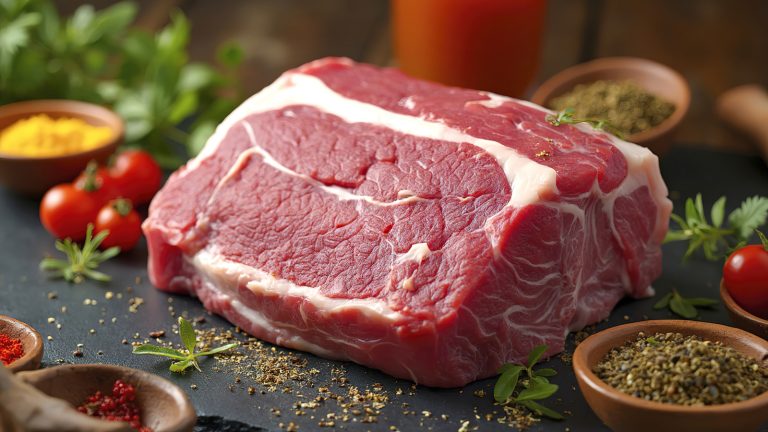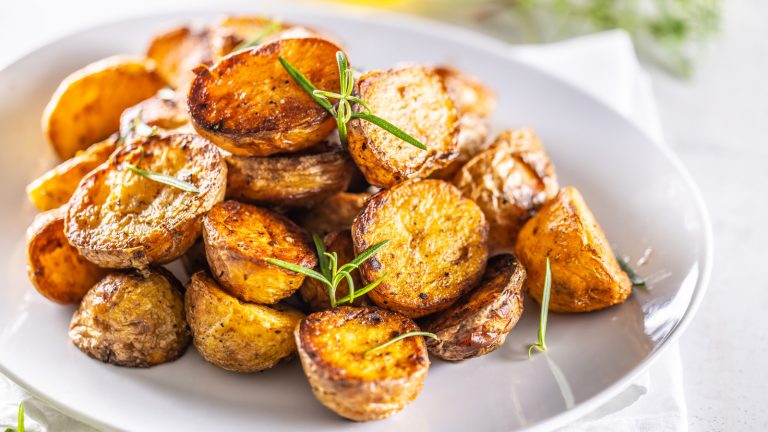You are always just one genius leftover recipe away from cracking the code to making meals that taste impeccable and look restaurant-worthy without the hefty bill to match. Discovering new eateries in your area is always fun, but for most, it isn’t an everyday thing and can’t rival the satisfaction of a home-cooked meal that’s beneficial for your body and budget. Whether you’re looking to stay on track with your weekly grocery spending to avoid impulse buys or cut down the amount of time you spend fussing over recipes, making quality, affordable meals that last long just makes sense.
Meal prepping is not for the faint hearted, even with the best restaurant hacks and tricks to make it as smooth and stress-free as possible. It requires plenty of planning and a good amount of refrigerator and freezer space. When done right and paired with other creative ways of managing your weekly meal planning, stretching your meals becomes less of a challenge (or a chore). From getting confident turning leftovers into masterful frittatas to making provisions so that you’re not throwing away food and making trips to the groceries mid-week, there are several ways to go about enjoying food that lasts long without breaking the bank.
Get creative with your omelet and frittata skills
One way to guarantee that your food lasts longer is by getting creative with what you do with leftovers. Minimizing food waste is one of the most effective ways to get the most out of your groceries, all the while surprising yourself with what scraps can actually be turned into. One dish that truly transforms the way you make use of leftover food is the humble omelet (which can be perfected with a few tips), scramble, or frittata. Simply add in your leftovers to your eggy mix to create a whole new meal. Easy add-ins include mushrooms, green onions, meat, or cheese, but you could really get creative with whatever you’d like to use up. This works as a heavier breakfast recipe or a late lunch snack.
For a completely plant-based alternative, make use of garbanzo flour to create an omelet or scramble formation. Garbanzo flour has a notable earthy taste with sweet undertones and holds up well in a pan when other denser ingredients are added. It is also one of the most popular gluten-free flours and is easy to find in most grocery stores. To recreate this eggless vegan meal, simply create a thick batter using the flour and the plant-based milk of your choice or water, then season to your liking. Once it is ready, you can pour the mixture into a pan and add your ingredients. If you want to double up on the garbanzo flavor, add in a dollop or two of hummus to keep it creamy and extra hearty.
Nothing rules like a no-rules soup
Soup is a friend of the wing-it chefs and the last-minute dinner-time cooks, and it can also be an accomplice to those wanting a meal that calls for no recipe book, trips to the store, or expertise. A good ol’ soup is pretty hard to get wrong, and even a basic tomato soup can deliver sweet results using everyday herbs. Chopping up whatever veg, fish, or meat you have and adding it to water is one of the most basic and tried-and-tested ways to eat well without having to do or spend too much.
Soups are also super convenient in helping you find ways to revive food that you would otherwise throw out. Got some extra potatoes hanging around on your plate? Save them for a later soup recipe. Not sure what to do with that extra bowl of uneaten beans? Chuck them into the soup pot. You can also customize soup however you’ll enjoy it: add some rice or naan bread on the side or even blend up the ingredients in your blender or food processor to get the consistency that you truly love.
Preserve foods to make them last longer
Throughout history, humans have made use of preserving food to keep things long-lasting and nourishing. Today, the most common and accessible ways to preserve vegetables include fermenting and pickling them. The brine water is the star of the show, providing lactic acid production (a natural preservative) and helping common vegetables stay edible and enjoyable for longer. Thankfully, the method is pretty simple and usually includes minimal ingredients. Using just salt and cabbage, you can have a tangy homemade jar of sauerkraut that can be added to meals for some added flavor and nourishment that actually gets better over time.
Taking inspiration from the fermented Korean classic kimchi or your favorite sauerkraut tastes, you’re only a jar or two away from rich and complex flavor (as if you needed new reasons to stock up on mason jars). You can ferment many vegetables, including cabbage, carrots, cucumbers, tomatoes, ginger, garlic, and more. Fermented food also provides a boost of good bacteria for the gut microbiome and is a natural probiotic, which gives you a balance of tasty and incredibly healthy food to spoon onto your plate. Fermented foods maintain their quality for up to a year when stored correctly.
Try Meatless Mondays
Dedicating a single day of the week to meatless dishes might support your plans of making the meat stretch throughout the rest of the week, or maybe even the budget (meat isn’t exactly the cheapest item on the grocery list). Veganizing your favorite meals or allowing other nutrient-dense, protein-rich vegetables to impress your palette is a step towards saving time (veggies don’t take as long as meat does to cook) and also gives you something to do with your ‘boring’ vegetables that may otherwise go bad. This could even be a day you dedicate to using up all the vegetables on the verge of going off for a satisfying food waste win. Opting for a juicy jackfruit for a BBQ pulled pork texture or keeping it light and simple with a tofu scramble suddenly makes Mondays a little less mundane.
The good news is that there are several ways to enjoy a flavorful and exciting meal without a cut of meat present. The most obvious way to get on board if you’re new to the idea of a meatless meal is to first find suitable substitutes. Whether you’re open to buying meat replacements or opting for whole food options like mushrooms or ground walnuts for taco meat replacement, your options are endless and probably will find a place in your week beyond Monday.
DIY pasta sauces to liven things up
A well-made sauce can add oomph to plain pasta. Rather than spending on the jarred stuff, why not get creative and whip together your own equally delicious concoctions? You can recreate your favorites using fresh ingredients or invent something new based on what you have lying around in the pantry. There are no limits to what you can create with a blender or food processor. For instance, while silken tofu may be a valuable part of your meal prep repertoire, holding on to the excess can be inconvenient. Give it a new lease on life by combining it with red bell peppers (jarred or fresh), nutritional yeast, lemon juice, garlic powder, and dried or fresh herbs. This creamy addition is perfect for adding some tang and color as the final touch to your bowl of noodles or as the base for a pan of mac and cheese.
Another benefit of utilizing homemade sauces is making dips and condiments that blend various influences. Some of the most incredible, though underrated, sauces aren’t always readily available in grocery stores. If you’ve ever been on vacation and had your taste buds awakened by deep flavors that you can’t seem to forget about, a pasta sauce is a fast and simple way to add a drizzle of worldly flavors into the mix without leaving the house. It could be as simple as turning leftover French onion soup into a French onion pasta sauce or reliving your island vacation with a homemade spicy Caribbean green sauce that goes great with Trini stew chicken noodles.





